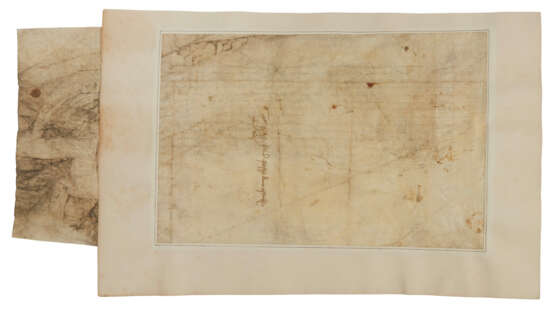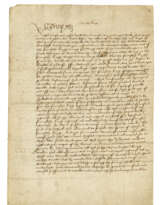ID 993151
Lot 65 | HENRY VIII (1491-1547), King of England and Ireland.
Estimate value
£ 18 000 – 25 000
Document signed (at head, 'Henry R'), Eltham Palace, 12 May 1514.
In English, on vellum, 14 lines on one membrane, 425 x 210mm, docketed on verso, window-mounted. Provenance: from the collection of the Norfolk historian Charles John Palmer (1805-1888); Christie's, 13 June 2012, lot 32.
A transfer of money 'for the Exspences of oure houshold' away from parliamentary scrutiny. Letters patent addressed to the treasurer and chamberlains of the exchequer, concerning a sum of £3,359 9d owed to the King by the cofferer of the royal household, John Shurley, for the year from 1 October 1511, which Shurley has delivered in cash to John Heron, treasurer of the chamber. Henry commands that 'at the receipt of oure said Eschequier in oure boke called the Pele ye doo to be entred & levied oon tayll [i.e. one tally] or taylls conteignyng the said som[m]e',
Sir John Shurley (d.1527) was cofferer (i.e. treasurer) of the royal household from 1509 until his death. Sir John Heron (1470-1522) had been treasurer of the chamber from 1492 and chamberlain of the exchequer from 1495: by the beginning of Henry VIII's reign, he was effectively 'the crown's chief financial official' (ODNB), overseeing most areas of crown expenditure, including in 1514 the renegotiation of the king's debts. 'Under Heron's stewardship the chamber grew steadily in fiscal importance until it was handling the bulk of royal revenues, including those from loans and subsidies, as well as income from most crown lands; by 1506 its annual revenues exceeded £200,000. Exempted from exchequer audit, Heron's accounts were scrutinized by the king himself' (ODNB). The transfer in the present document of a large sum from the household accounts to the chamber accounts fits in with this approach of removing expenditure from exchequer (and therefore parliamentary) oversight into the king's personal control. The year of the present document was the pivot of the early years of the 22-year old Henry VIII, coming after the military successes of 1513 against France and Scotland, and at the beginning of the rise of Thomas Wolsey, who was made Bishop of Lincoln in February 1514 and Archbishop of York in September the same year.
| Artist: | Henry VIII (1491 - 1547) |
|---|---|
| Place of origin: | Northern Europe, Europe, United Kingdom |
| Auction house category: | Letters, documents and manuscripts |
| Artist: | Henry VIII (1491 - 1547) |
|---|---|
| Place of origin: | Northern Europe, Europe, United Kingdom |
| Auction house category: | Letters, documents and manuscripts |
| Address of auction |
CHRISTIE'S 8 King Street, St. James's SW1Y 6QT London United Kingdom | |
|---|---|---|
| Preview |
| |
| Phone | +44 (0)20 7839 9060 | |
| Buyer Premium | see on Website | |
| Conditions of purchase | Conditions of purchase |





